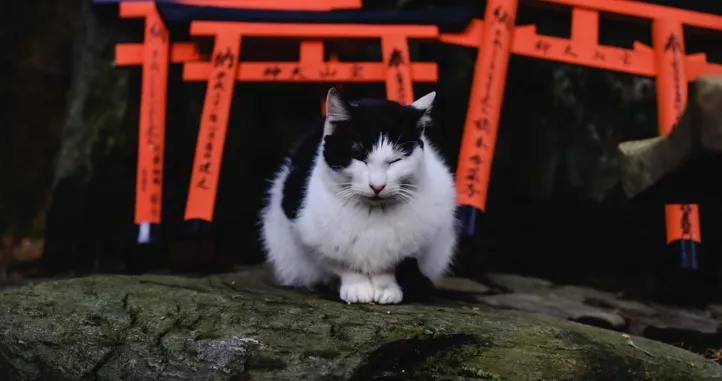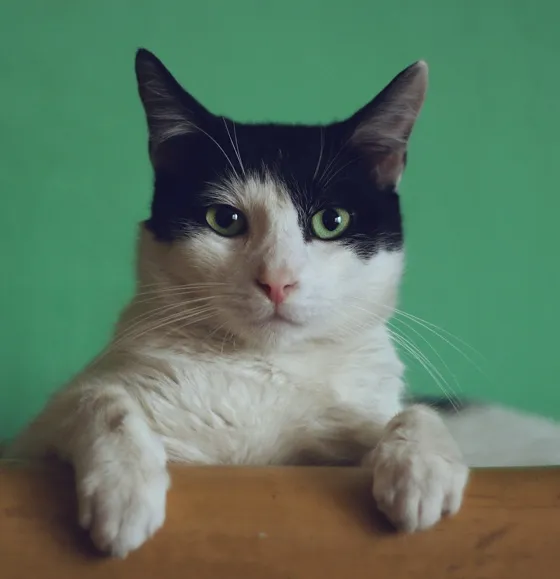
What Does the Image of the Cat Signify In Japanese Fiction?
In Japanese folklore, cats are the symbols of good luck and are said to have protective powers. Let’s take the story of maneki-neko for example. Centuries ago a feudal lord, standing under a tree, saw a cat waving at him. Curious, he moved towards the cat and just then lightning struck the tree. Thus was born the story of maneki-neko and even now we see Asian stores and restaurants have figurines of this auspicious cat with the hope that it will bless the owner and the customers. Since then, the image of the cat in Japanese fiction has evolved. Now, they are not just a background prop but have stories centered around them.

Hiro Arikawa’s The Traveling Cat Chronicles (translated by Philip Gabriel), features a cat who gets to move around with his owner in a silver van. This book talks about the connection that exists between humans and cats and in turn humanity’s correlation with nature and animals. Satoru adopts a stray cat, names him Nana, and off they go traversing Japan meeting people, some of whom are from Satoru’s past. Nana doesn’t know until the end about Satoru’s reasons for going on a long road trip and for taking him along. From what we know, Satoru feels that he won’t be able to look after Nana for long so he needs to find him another home. He visits the homes of his friends whom he hasn’t seen in a long time and also his aunt, Noriko. As Nana and Satoru travel around Japan, the readers catch glimpses of who they are, their past, and their relationships with other humans and animals. Through Nana, the readers get to experience the compassionate nature of not just Satoru but also other characters. Satoru’s friends are affectionate towards Nana and Noriko’s initial reluctance about cats dissolves into such intense love that she even shelters an abandoned cat. Nana brings out uncomplicated traits like friendship and loyalty and signifies how much love all living beings are capable of giving. Cats in Japanese fiction often reflect the compassionate side of the human heart. In a world that is being wrecked by wars and pandemics, this fictional take on cats revives our faith in humanity and how much kindness it still has to offer. The spectacle of mass consumerism that is often marketed to us as beauty falls short in comparison to the beauty of humankind’s relationship to the natural world. This cat’s tale is a call for all of us to take stock of the animal world that coexists with ours and thus unify with it.
In Takashi Hiraide’s The Guest Cat, translated by Eric Selland, the cat becomes an agent of hope. A cat starts frequenting the home of a married couple in a quiet Tokyo neighborhood. Their marriage has become very predictable and they no longer have much to say to one another. Their relationship has become a billboard for monotony. The cat brings novelty and anticipation to their lives. Soon they find happiness in the cat’s many antics and have much to share with each other. As their love for this mysterious guest grows, the strings of their marriage tighten. In this novel, the cat becomes a recipe for a renewal, a marvelous miracle exhibiting how love is never really lost and is always waiting for us in every nook and cranny. Even though it might not seem like it all the time, the couple still carries a lot of love within themselves. The cat symbolizes the outlet through which this fact is brought to the fore. Life in all its ordinariness and even ugly vulgarity imposes itself on this couple till the cat comes along. The cat becomes a way through which the monastic silence is broken and the oppressive weight of mundanity is being overcome. Even though it is a distanced intimacy, sincere but lacking permanence, the cat and the couple shares a sort of intimacy nonetheless.
In Nick Bradley’s The Cat And The City, the cat becomes an emblem of the city and its many mysteries. In this short story collection, each story stands on its own but also has a connection with the other stories. The city here is a complex machine operated by fate and fate is a trickster with a sense of humor that often borders on cruelty. We see Naomi, an 18-year-old youngster asking the tattoo artist, Kentaro, for a tattoo of the city of Tokyo over her back. She specifies that she doesn’t want any people, so Kentaro mischievously draws a cat reasoning that cats are not people. Much to Kentaro’s surprise, the position of the cat keeps shifting. Just like its real-life counterparts, the cat of the tattoo has been bestowed with unbridled freedom and it can move whichever way it pleases. As the book progresses, many questions arise. Is Kentaro responsible in any way for bringing the cat to life? Is Naomi capable of shapeshifting and becoming the cat from time to time? Is the cat a metaphor for the metro line in Tokyo which seems to connect every place? Regardless of all the mysteries that remain ambiguous till the end, the cat, and in extension the city, has been established as the common connection we see between all the characters. This represents how humans are all tied together in some way. Regardless of how much we fight among ourselves, our basic needs are the same. The cat witnesses the despair, loneliness, and failures of the characters. The ugliness of the everyday sometimes becomes too hard to bear and the cat is the representative of that. It becomes the spirit of the city, something which pulls together or pushes people away from each other, the common denominator through which they emote.
In Japanese fiction, the image of the cat has many connotations. But what stands out is its ability to reflect certain aspects of humanity. It makes us stand eye to eye with what lies inside us. It also helps us evaluate how meaningfully we are engaging with the world around us. If you wish to read more books on cats, please check out this list on some of the most well-known cats of the bookish world.











